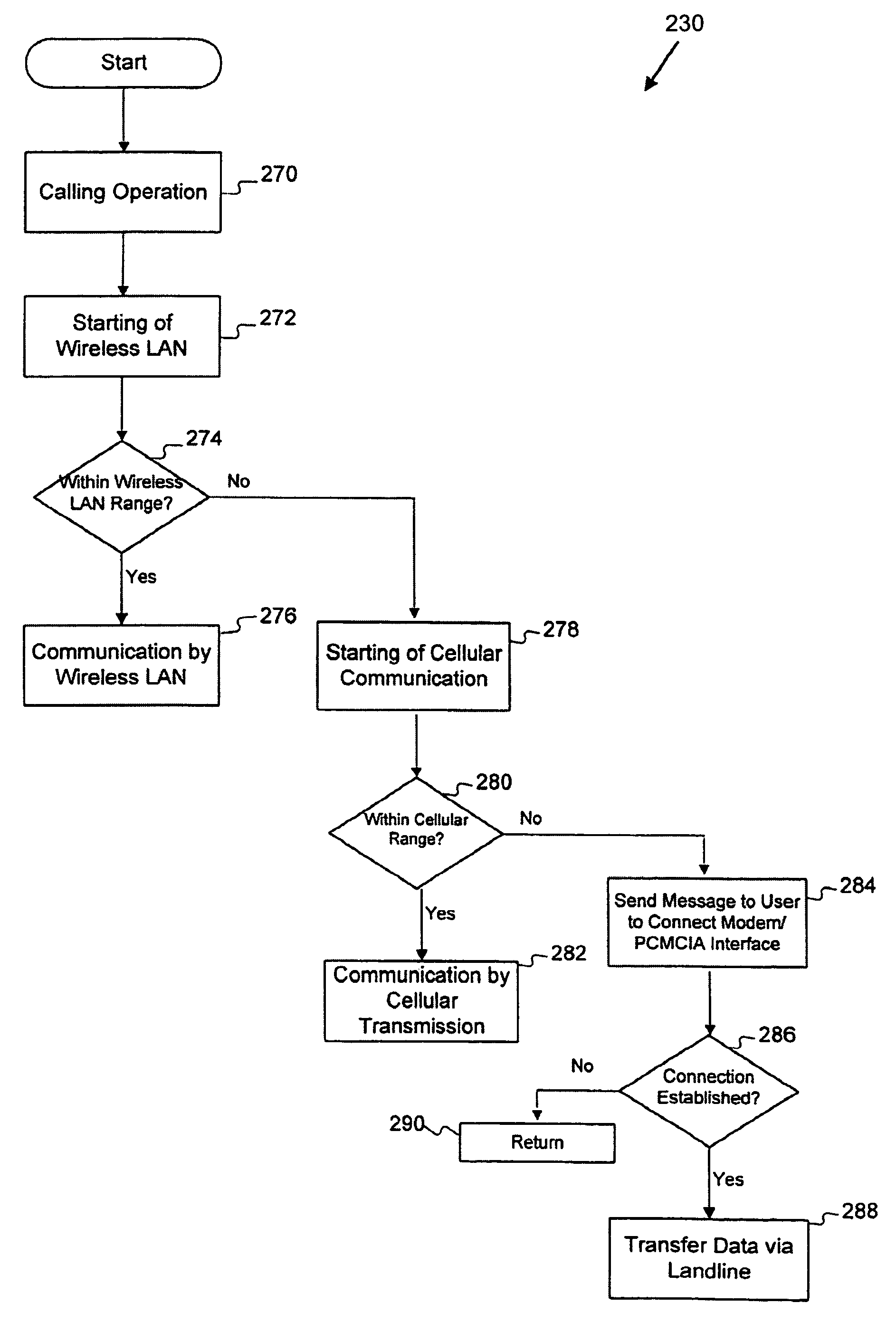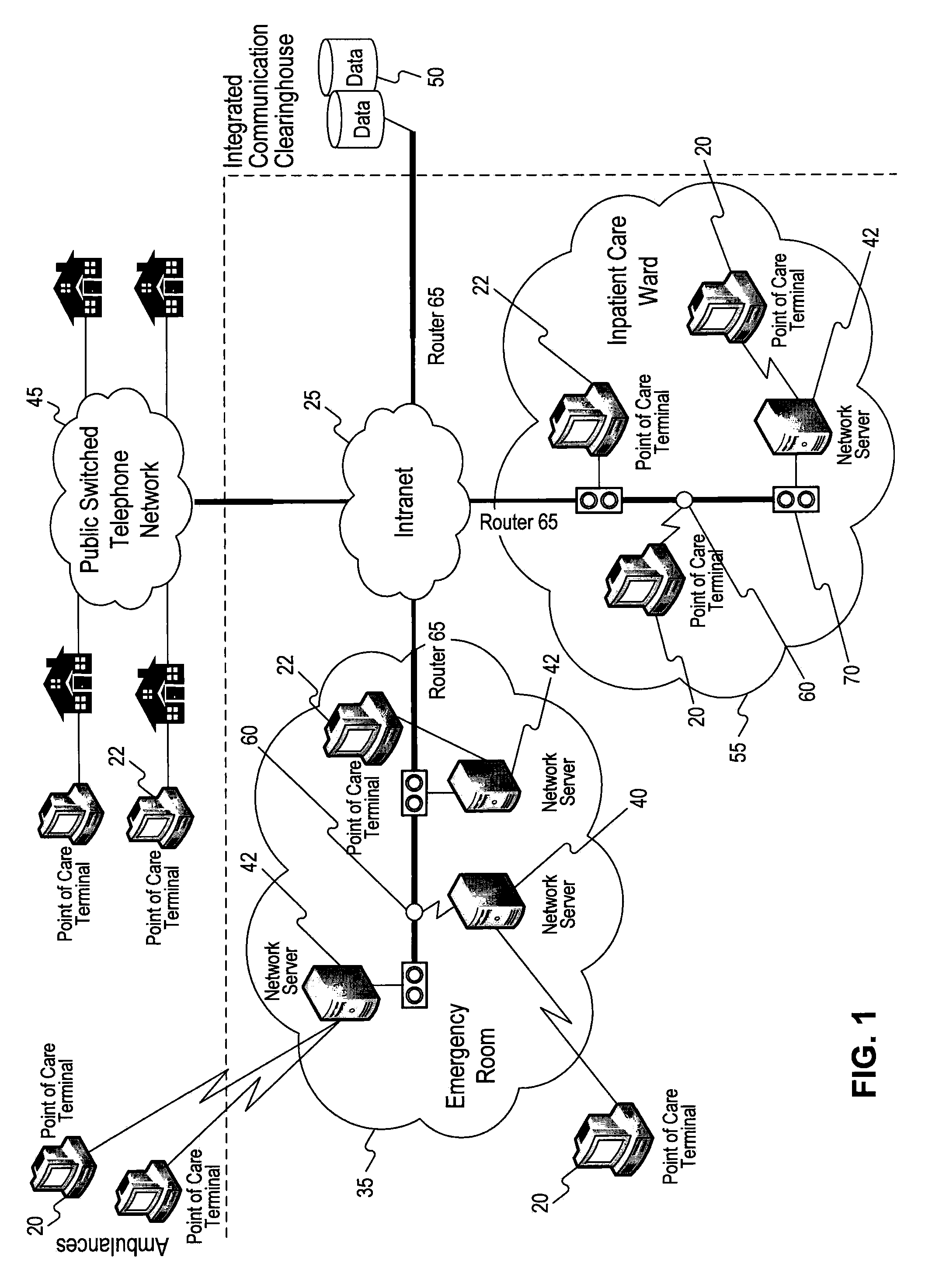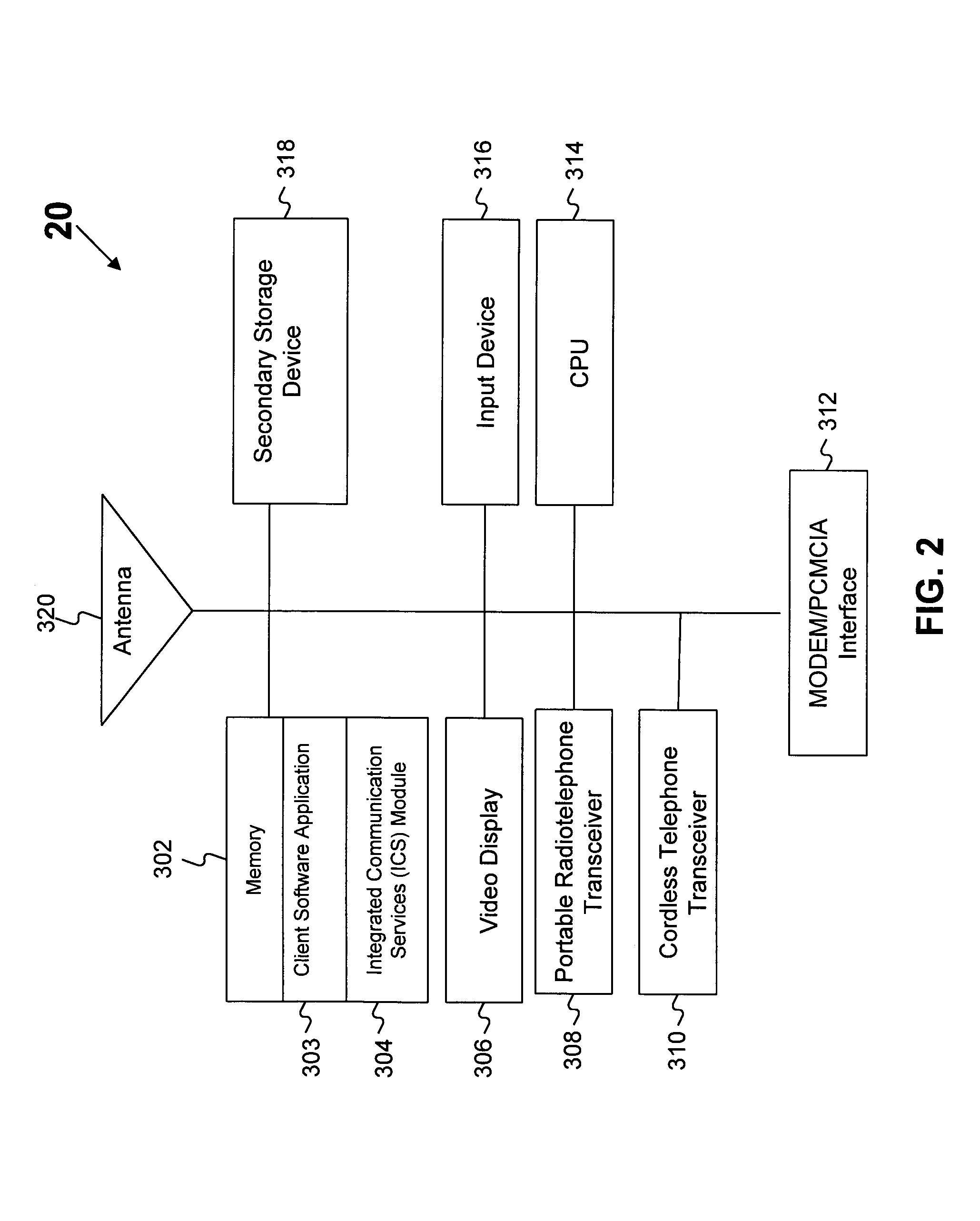Method and apparatus for integrated communication services provisioning for health care community
a technology for health care community and integrated communication, applied in the field of methods and equipment for the collection and distribution of medical information, to achieve the effect of monitoring effectiveness and cost, and simplifying the delivery of patient records
- Summary
- Abstract
- Description
- Claims
- Application Information
AI Technical Summary
Benefits of technology
Problems solved by technology
Method used
Image
Examples
Embodiment Construction
[0030]In the following detailed description of the preferred embodiment, reference is made to the accompanying drawings that form a part thereof, and in which is shown by way of illustration a specific embodiment in which the invention may be practiced. This embodiment is described in sufficient detail to enable those skilled in the art to practice the invention and it is to be understood that other embodiments may be utilized and that structural changes may be made without departing from the scope of the present invention. The following detailed description is, therefore, not to be taken in a limited sense.
[0031]A system in accordance with the present invention, comprises a plurality of point of care terminals and associated network server computers. The network server computers may be generally similar to the point of care terminals including a central processing unit, display device, multiple transceivers and operator input device. Moreover, it will be appreciated that a point of...
PUM
 Login to View More
Login to View More Abstract
Description
Claims
Application Information
 Login to View More
Login to View More - R&D
- Intellectual Property
- Life Sciences
- Materials
- Tech Scout
- Unparalleled Data Quality
- Higher Quality Content
- 60% Fewer Hallucinations
Browse by: Latest US Patents, China's latest patents, Technical Efficacy Thesaurus, Application Domain, Technology Topic, Popular Technical Reports.
© 2025 PatSnap. All rights reserved.Legal|Privacy policy|Modern Slavery Act Transparency Statement|Sitemap|About US| Contact US: help@patsnap.com



